Chyawanprash is a well-known revitalizing polyherbal (around 40-50 herbs) ayurvedic recipe of which Amla is the most conspicuous, the richest source of vitamin C. It is one of the classic foods to increase ‘ojas.’ Ojas, according to Ayurveda, is said to be responsible for increasing strength, vigor, vitality, youthfulness, immunity, fertility and radiance on skin. Due to our wrong dietary and lifestyle choices, we are depleting ourselves of this much needed ojas.
Chyawanprash is a traditional superfood, power packed with nutritional and medicinal benefits. It is being used in India even before people knew what terms like antioxidant meant. It is typically a winter food just when amla can be seen in full swings in the market. This is the best time to prepare and consume Chyawanprash by the whole family. However, it can be consumed safely throughout the year in the right quantity.
When taken regularly with milk at bed time for a definite period of time, it is capable of taking care of many health problems. Do you want to know what the health benefits of Chyawanprash are? Keep reading.
Role of Chyawanprash in digestive system
It strengthens digestive system and helps in flushing out accumulated toxins and free radicals from the body. It reduces further free radical generation. It is a natural detoxifier and provides relief in some of the common digestive disorders such as acidity, flatulence and constipation due to some of its ingredients like pippali, amla, nagkesar, tamalpatra, bel, harad, nagarmotha, elaichi and dalchini.
Role of Chyawanprash in respiratory system
Chyawanprash is useful in clearing up the respiratory passages, relieving the bronchospasm in asthma and strengthening the respiratory system. It fights away cold and prevents frequent respiratory tract infections. Scientific studies have shown that eating Chyawanprash significantly suppresses the plasma histamine levels. Histamine is the major inflammatory mediator released in response to an allergen in people with allergic diseases.
Regular intake of Chyawanprash may contribute in the prevention of allergic diseases like asthma because it has potent anti-allergic activity. It may help in reducing cold symptoms despite seasonal variations.
Role of Chyawanprash in central nervous system
Reiterating the role of Chyawanprash in memory boosting potential is like stressing the obvious. It enhances cognitive abilities like alertness, attention and concentration. It has a calming effect on mind, reduces stress, increases memory, and therefore very suitable in growing kids for improving their academic performance.
Students who eat Chyawanprash daily have a better storage, retention and recall abilities. Its nourishing action on central nervous system can be attributed to some of its ingredients like ashwagandha, nagkesar, guduchi (Giloy), nagarmotha and amla.
Role of Chyawanprash in reproductive system
Chyawanprash improves fertility. It is a known aphrodisiac. It helps in strengthening the reproductive system.
It regularizes the menstrual cycles in females and thickens the semen in males. Some of the aphrodisiacs present in Chyawanprash are gokhru, shatavari, jivanti, ashwagandha and vanshlochan.
Role of Chyawanprash in immunity
One of the main ingredients in Chyawanprash is Amla (Amalaki or Indian gooseberry) which is a great immunity booster owing to its high antioxidant and vitamin C reserves. According to Ayurveda, Chyawanprash belongs to the category of ‘Rasayana’ which means ‘rejuvenating tonic.’ It is very useful in combating fever, depletion, emaciation and general body weakness.
It is an anti-ageing tonic, imparts longevity and youthfulness, brings glow on face by improving skin complexion and improves hair quality. It is required by all age groups-children and old age.
What does the word Chyawanprash mean?
As mentioned in ancient scriptures, Chyawanprash derives its name from the sage ‘Chyawan’ who regained his youthfulness, strength and energy by consuming this recipe after he was debilitated from meditation of long years. The term ‘Prasha’ means something to be eaten i.e. food fit for oral intake.
Chyawnprash is an ‘avaleha’ i.e. a semisolid jam like preparation which tastes both sweet and sour. It is spelled variedly such as ‘chyavanaprasha’ or ‘chyavanprash’ or ‘chyavanaprasam’ or ‘chyawanaprasha’.
The original ayurvedic recipe of chyawanprash was first documented approximately 2000 years ago in Charaka Samhita, earliest ayurvedic piece of work.
How to eat Chyawanprash? What is the best time to eat Chyawanprash?
The recommended daily intake of Chyawanprash is approximately 28 grams i.e. 2 teaspoons with milk preferably at bed time. Milk should be avoided in people with asthma. People with high blood sugar levels should consult their healthcare provider before ingesting as the percentage of sugar is high in it.
Chyawanprash ingredients or composition of Chyawanprash
Around 50 herbs are mentioned in the original documented Chyawanprash recipe in charaka samhita and other similar authentic treatise. Their recipes are listed in the first Schedule to Drugs and Cosmetics Act. However all these recipes differ from each other in their herb compositions and proportions.
I am sharing below the original authentic method of chyawanprash preparation as mentioned in charaka samhita. In case you want to prepare it at home, Please refer to my Home made Chyawanprash recipe. Keep reading!
Standard Traditional method of Chyawanprash preparation
Chyawanprash ingredients (50 grams each):
- Bel or bilva or Aegle marmelos
- Arni or agnimantha or Premna integrifolia
- Gambhari or khambhari or kashmarya or Gmelina arborea
- Arlu or Sona patha or Shyonak or Oroxylum indicum
- Patla or Patha or Parul or Padhal or Stereospermum suaveolens
- Gokhru or Gokshura or Tribulus terrestris
- Shalparni or Sarivan or Desmodium bulbifera
- Brihati or Bari kateri or Vanbhantha or Solanum indicum
- Kantakari or chhoti kateri or kashtakari or Solanum xanthocarpum
- Kakdashingi or Karkatshingi or Shringi or Pistacia integerrima
- Munnaka or Draksha or Vitis vinifera
- Harde or Haritaki or Harad or Abhaya or Terminalia chebula
- Giloy or Guduchi or Amrta or Tinospora cardifolia
- Bala or Bariyara or Sida cordifolia
- Bhumi amla or Bhumyaamalaki or Bhumi-amla or Bhueawala or Phullanthus niruri
- Adusa or Vasaka or Adhatoda vasica
- Jivanti or Leptadenia reticulata
- Kachur or Sathi kehora or Curcuma Zedoaria
- Pushkarmool or Pohkarmool or Inula racemosa
- Nagarmotha or Mustak or Motha or Cyperus rotundus
- Magdaparni or Mudgparni or Van-mug or Mataki or Phaseolus trilobus-sensu
- Mashparni or Van-udadh or Mashvan or Teramnus labialis
- Prishparni or Pithwan or Devala or Uraria picta
- Pippali or Piper longum
- Kaknasa or kakakshi or kauathodi or Martynia diandra
- Varahikand or Varahi or Dioscorea bulbifera
- Vidarikand or Ipomoea digitata
- Punarnawa or Punarnava or Gadhapuran or Boerhaavia diffusa
- Kanwal or Neelkamal or Nelumbium speciosum
- Agar or Agarkashta or Aquilaria agallocha
- Chandan or Lal chandan or Ptertocarpus santalinus
- Shatavari or Shatavar or Asparagus racemosus
- Ashwagandha or Asgandh or Withani somnifera
Method of Chyawanprash preparation
- Take 50 grams each of the above herbs and boil in 12 litres of water.
- Indian Gooseberry (Amla) 5 kg in weight, wrap them in a clean cloth like a potlee. Dip it into the above herb mixture.
- Heat this mixture until the volume is reduced to 1/4th of the original volume.
- At this stage, open the cloth containing amla discard its seeds.
- Filter the herb mixture and discard the marc.
- Rub the amla pieces over a mesh and discard the left over fibre.
- The amla pithi is obtained as a result.
- Heat an iron pan and add 300 grams of ghee and 300 grams of sesame seed oil (til ka tel) in it.
- Add amla pithi in it and cook for some time.
- Add the above prepared herb mixture in the iron pan. Also add Sugar (4 kg) in it.
- Remove the pan from flame.
- Add the following herbs one by one in the resulting mixture: 150 grams vanshlochan or Bambusa arundinacea, 100 grams pippali, 10 grams nagkesar or Mesua ferra, 10 grams elaichi or cardamom or Elettaria cardamomum, 10 grams tamalpatra or tejpatra or patra or Cinnamomum tamala, 10 grams dalchini or Cinnamomum zeylanicum
- The final product that we get now is a dark brown coloured semi solid ‘avaleha’ called Chyawanprash having fruit jam like consistency.
Benefits of Chyawanprash for kids
Chyawanprash helps in building immunity in children against frequent respiratory infections. Owing to high Vitamin C content in it, its regular intake helps kids to fight cold and cough especially during changing season when kids are most vulnerable and prone to upper respiratory tract infections.
Secondly, due to presence of herbs like nagkesar, nagarmotha, guduchi, it acts as a brain tonic. Children who take Chyawanprash regularly have a better attention span, memorizing, retention & recall skills and perform better academically.
Thirdly, kids being always on their toes need extra energy to play around. Chyawanprash instills much energy in our bodies so one does not feel tired or worn out easily.
Fourthly, it promotes healthy skin, hair and nails in growing kids due to high content of Amla in it.
For best results, it is always better to have home made chyawanprash. I have shared the recipe on how to make chyawanprash at home in the recipes section of this website.
How to store Chyawanprash?
The shelf life of Chyawanprash without preservatives is approximately six months. Thereafter, the polyphenolic compounds, ascorbic acid in amla and sugars undergo chemical reactions and start decomposing which is apparent by the browning of the product. This in turn results in loss of medicinal properties of Chyawanprash.
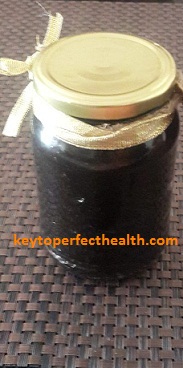
Make sure to use a glass container which is thoroughly washed and then sun-dried. Add the chyawanprash in the container up-to the brim and store it in refrigerator.
References:
- Patel S. B., Renjal P. U. Comparative Pharmaceutical Study of Chyavanprasha Yoga as described in Charaka Samhita and Sharngadhara Samhita. J Ayurveda Integr Med Sci 2017;1:102-107. http://dx.doi.org/10.21760/jaims.v2i1.7495
- Sailesh K.S., Archana R., Mishra S., Symphoria and Mukkadan J.K. Effect of Chyawanprash on cognitive, autonomic and respiratory parameters in college students. International Journal of Research in Ayurveda and Pharmacy. 5(4), Jul-Aug 2014.
https://www.researchgate.net/publication/265644641_Effect_of_chyawanprash_on_cognitive_autonomic_and_respiratory_parameters_in_college_students - Singh et al. Comparative Estimation and Chemical Standardization of New and Old Sample of Chyawanprash. Int J Pharm Pharm Sci 2013; Vol 5, Suppl 3, 801-804. nopr.niscair.res.in/bitstream/123456789/…/1/IJTK%205(4)%20(2006)%20484-488.pdf
- Parle M. and Bansal N. Traditional Medicinal Formulation, Chyawanprash-A review. Indian Journal of Traditional Knowledge. Vol. 5(4),October 2006,pp.484-488. https://pdfs.semanticscholar.org/2d8e/f26f71ebdfd3bd5679d6c730b7897dec8afc.pdf

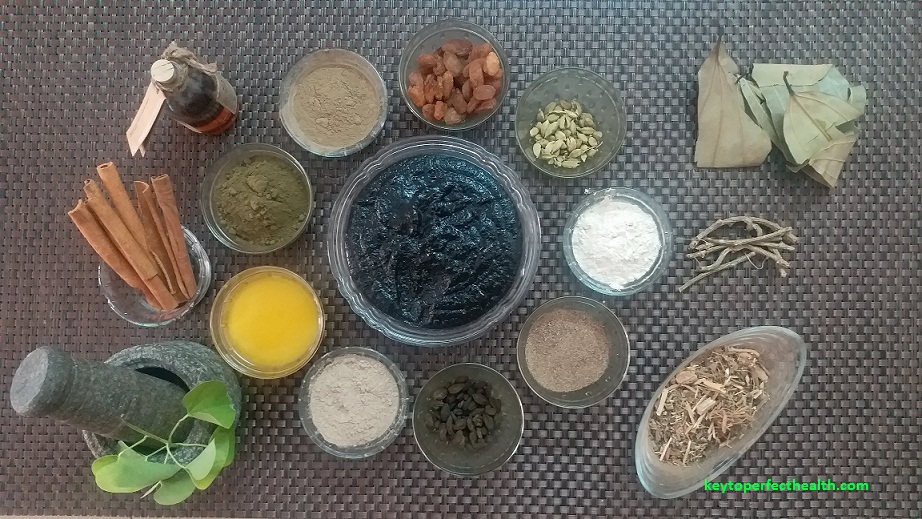
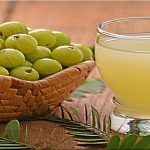
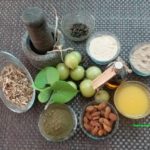
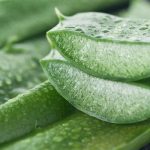
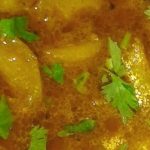
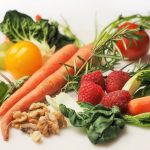
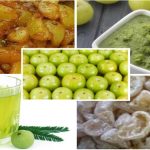
It’s in point of fact a nice and helpful piece of information. I’m glad that you just shared this helpful info with us. Please keep us informed like this. Thank you for sharing.
I am glad you found the post useful..its quite motivating thankyou:)